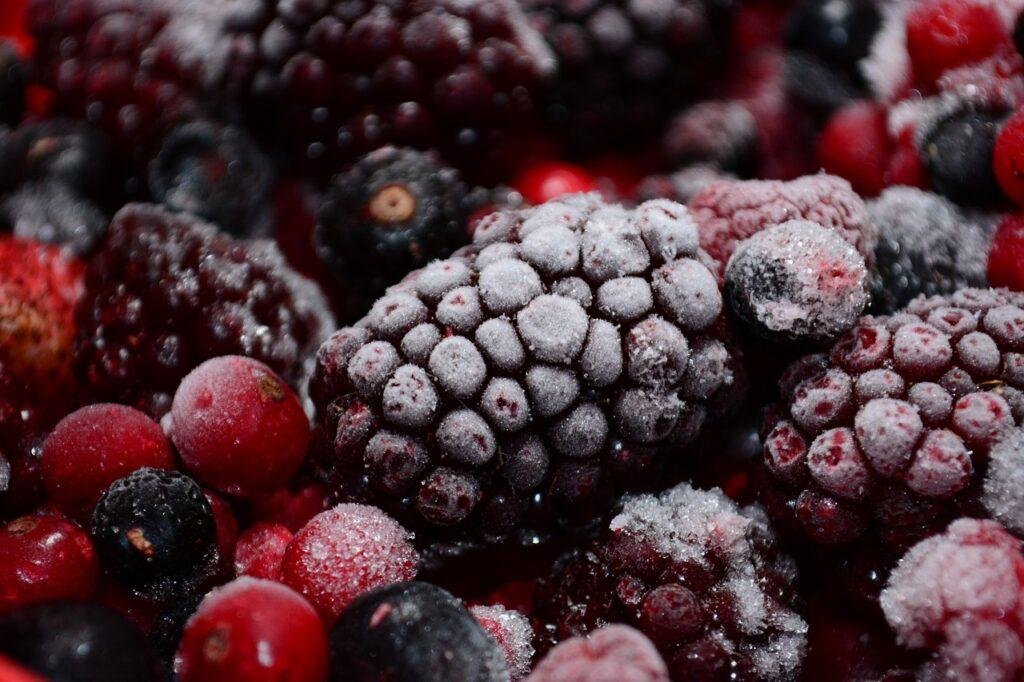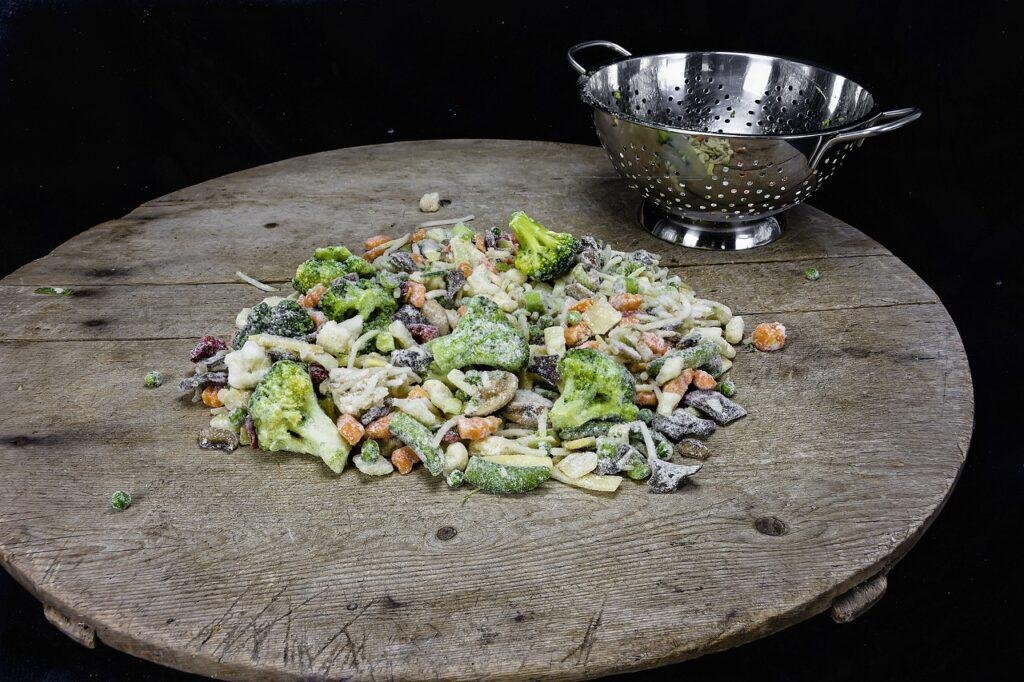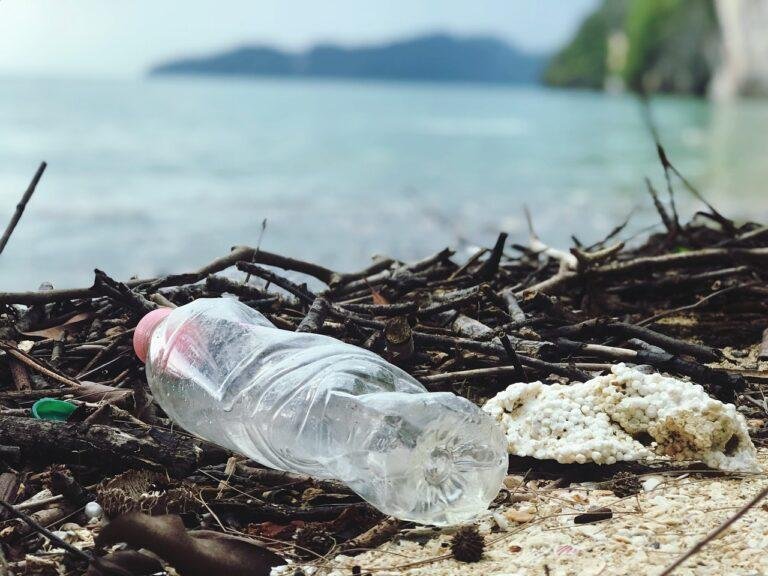Can You Freeze Food Waste? How To Freeze 8 Types Of Food Waste
Just a heads up, this post contains some affiliate links. That means that we earn a small commission if you buy the product at no extra cost to you. That allows us to continue to research and share interesting articles with you. :)
The key to successful living is having a low impact on the Earth. One way to do this is by reducing your food waste and focusing on self-sufficiency and simplicity.

No matter how far you go to reduce your food waste, it is inevitable that you’ll have some leftovers. From vegetable peelings to leftover portions, food waste happens but there are ways to reduce it, and freezing food waste is just one of those ways.
The short answer is that yes, you can freeze food waste, most food can be frozen easily. Some food waste, like raw vegetables, may need preparing for the freezer (methods such as blanching or full cooking should be used) but nearly all food leftovers are suitable for home freezing as a method of both food preservation and food waste reduction.
Why Freeze Your Food Waste?
Freezing food waste is a great way to reduce your food waste, especially if you often have leftovers from bulk shopping or have a freezer-friendly diet.
The main reason to freeze food waste is that it’s simple. If you want to reduce your food waste but prefer not to cook every night, freezing food waste can be a suitable option as it’s fairly easy to do and doesn’t require much thought.
Reducing wastage is also good for the planet, helping reduce your carbon footprint in addition to easing the strain on the landfills around the world.
What Can Be Frozen?
It’s important to remember when freezing food waste that it still needs some care to be taken and some precautions are needed.
Freezing Meat-Containing Leftovers
It’s recommended that if your leftovers include meat, you should heat the portions to ensure they are fully cooked and allow them to cool naturally before freezing them. Always put the date of cooking and freezing on the packaging and consume within 3 months.
It is safest to keep meat and dairy products separate from other types of food. Raw meat especially should be frozen on its own.
Freezing Vegetables

For many home gardeners, a glut of summer vegetables is a blessing and also a curse!
When it comes to preserving those veggies, there is only so much fermented or picked produce one person can eat, and this is where freezing offers another solution.
Freezing vegetables is one of the very simplest methods of preserving food and is a reliable way to prevent wastage when you have a glut of produce. There are no complicated processes involved in freezing vegetables and if you can boil water, and have a freezer, you’re all set.
Just make sure that the vegetables you’re putting in the freezer are raw. It’s best to freeze them uncooked or unpeeled to retain as many nutrients as possible, but many vegetables will need blanching
Blanching vegetables is a process of preservation for texture, colour, and flavour. Raw vegetables are scalded in boiling water for a few seconds (depending on the vegetable) and immediately put into ice-cold water to cool. This slows down the enzyme process responsible for the loss of flavour, colour, and texture.
This handy chart shows common vegetables and the blanching time needed for successful freezing:
Freezing Cooked Leftovers
What is the most common reason to freeze food waste? That’s right, to preserve leftovers! Leftover cooked meals usually freeze well, as long as they are not too fatty or oily. If they are, make sure they are refrigerated and consumed within a few days
Foods like casseroles, one-pot meals work well. Soups also freeze pretty well, but remember to cool them first and get them into the freezer quickly to prevent bacteria growth.
Freezing Baked Goods
Baked goods freeze well and usually don’t require any preparation. However, if they are going to be in the freezer longer than a month, store them in airtight containers. I love these glass airtight containers that can go straight from the freezer to the microwave!
Bread, pastry, and cakes are often tastier when they’ve been frozen. Pre-slice or freeze whole for up to one year. If a cake is going to be kept for more than a month, wrap it tightly in foil before freezing.
Many homesteaders will bulk-cook-baked goods such as cake, bread, muffins, cupcakes, and so on ready for freezing because this saves time and money in the long term. We do this for Mr G’s lunches, he always has a slice of cake or a little cupcake in his lunch, usually wrapped in foil straight from the freezer to his work lunch bag!
It is even possible to freeze most pre-made sandwiches, but the texture of a defrosted and thawed frozen sandwich isn’t always as nice as a freshly made sandwich.
Freezing Uncooked Baked Goods
Have you made cookie dough and overestimated the number of cookies you needed? Is it possible that your family won’t eat all 65 cinnamon buns that you’ve prepped for the oven? Don’t fret, you can freeze them!
It’s entirely possible to freeze most raw and uncooked baked goods. For this to work, you’ll need to decide how to freeze your baked goods.
For things like cinnamon buns and cookie dough, you can make them ready to go in the oven and flash freeze on a tray. Once the individual portions are mostly frozen, they can be put together into a ziplock bag without fear of them sticking together.
For mixtures such as cake mixture, spoon into a freezer dish or a reusable silicone zip lock bag (I LOVE these reusable bags and have been reusing them for a few years now!), get as much air out as possible, freeze just as you would as soup with a label and date.
Cookie dough and similar can be cooked from frozen, but cake mixture will require fully thawing before baking.
Fruit and Vegetable Pulp and Peelings

Making your own juices or smoothies at home? Be sure to strain out the pulp and freeze it for later!
Vegetable pulp can be used in cooking (think juicy meatballs) or for making soups or stock. The key is to use the freezing method that best suits your needs.
The best way to freeze pulp is to do it in ice cube trays. Place silicone ice cube trays in the freezer with your fruit and veggie pulp. When frozen, transfer them to an airtight container or freezer bag. They can be used in smoothies, soup etc., when needed.
Vegetable peelings can be thrown into a reusable ziplock bag as-is with no prep needed. Once the bag is full, it can be emptied into a pan with water and seasoning and cooked into a vegetable stock. Stock can then be frozen in ice cube trays and the leftover peelings put into the compost bin or wormery so that nothing goes to waste!
Want to find out if a wormery is better than a compost bin, or whether it’s worth having both? Find out in this article.
Freezing Grains and Pasta
Freezing food waste made up of grains such as rice and pasta is a great way of keeping them on hand for next week’s dinner. It does take a little more preparation than freezing everyday food waste, but it’s well worth it.
Before freezing any grain, you’ll want to make sure that the grain has been cooked through but left slightly al dente. Re-heating grains and pasta will usually finish off the cooking process, if you freeze fully cooked pasta or rice there is a chance it will go soft and chewy when reheated.
Freezing Dehydrated (non-meat) Food
Another way to save money and keep food on hand is to dehydrate food that would normally go to waste. Dehydrated foods such as vegetables are great to add to soups, stews, broths, casseroles, and other meals for added vitamins, and powdering your dehydrated food is another great way to preserve them.
To make this process as simple as possible, all you’ll need is a dehydrator and freezer containers or bags. Cut your food up into small thin pieces and dehydrate until it is fully dry. Place in the freezer container or bag with some sachets of silica gel (food safe) and put in the freezer for use later.
While it’s not necessary to always freeze dehydrated food (most dehydrated food will last for months as long as it’s fully dry) by putting it in the freezer, you are able to keep it for a lot longer, sometimes even years!

How Long Can You Freeze Food Waste For?
Frozen food will -usually- stay good for approximately six months.
Get your food waste into the freezer as soon as possible for best results, you want to make sure that food stays as fresh as possible before freezing.
It’s best to freeze your food in small portions and use it within a few months. However, you may also choose to freeze larger portions that are easier to consume in one go (for example, if you want to make stock with vegetable scraps or blanch fruit for smoothies).
Just be aware the if you do freeze larger portions, you are at a greater risk of losing your food should you lose power to your freezer(s). If you live off-grid, this won’t be a problem, but if you are grid-connected it is something to consider.
Back To The Good Life is a participant in the Amazon Services LLC Associates Program, an affiliate advertising program designed to provide a means for sites to earn advertising fees by advertising and linking to Amazon.com. We also participate in other affiliate programs which compensate us for referring traffic.







